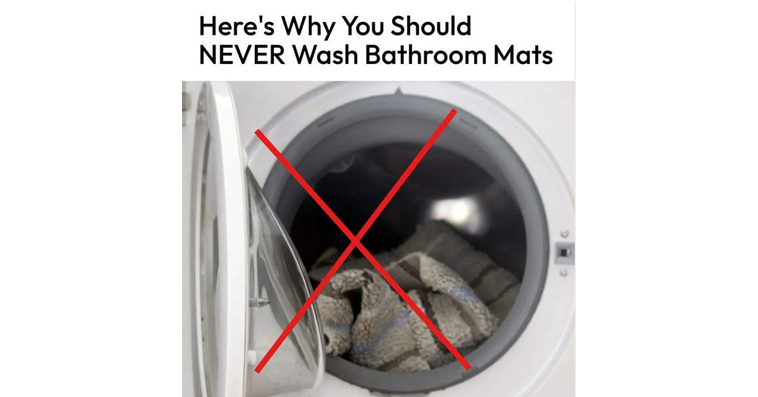With more than 30 years experience of working as an appliance technician, I’ve seen too many front-load washing machines ruined because customers used them to wash bathroom mats. I’ve seen a new front-loader broken beyond repair when a customer tried washing two bathroom mats at the same time. Bottom line: Never clean bathroom mats in your washing machine. Here’s why. P.S. These stone bath mats will have you saying goodbye to your fabric mats forever.
Why Shouldn’t I Put My Bathroom Mat In The Washer? The majority of front-loading washers feature huge spin baskets that can hold large blankets and bathroom mats. Customers believe these washers can wash massive, heavy goods of any size and weight. However, even the best bathroom mats soak so much water that they weigh far more than the washer is meant to handle.

Modern washers spin at far quicker rates than previous models, reaching up to 1,200 revolutions per minute during high-speed spins! These quicker speeds generate a lot of force when dealing with big things, and the extra weight pulls the washer apart. If you attempt to clean bathroom mats in your machine, you risk two costly issues. It can damage the drain motor.
Bathroom mats frequently feature a rubbery backing that disintegrates throughout the wash cycle. The little rubber bits then clog the drain pump’s motor and drain pipe, preventing it from functioning properly. Often, the drain motor must be changed. This repair typically costs $240 for supplies and labor. Even bathroom mats without a rubber backing can interfere with the drain motor. Long strands on certain mats fall off during the wash cycle, clogging the drain.
It can damage the spin basket bearing. The rear bearing that supports the spin basket bears the brunt of the damage caused by thick bathroom mats and the high centripetal force produced by the spin cycle. When the bearing breaks, the repair might cost $500. There’s also a spider bracket that supports the spin bracket, which frequently breaks owing to its increased weight. The spider bracket repair costs roughly $500.
Just this week, a consumer contacted me about an unusually loud spin cycle caused by a worn-out rear bearing in her two-year-old LG washer. He told me that he often washes huge blankets and bathroom mats in his machine. I felt awful telling him that because the repair would cost more than $500, replacing the washer was a better option.
Now he must come up with approximately $1,200 for a new washer, and some landfill somewhere receives another big object that will take thousands of years to biodegrade. Washing machine makers should warn customers not to wash bathroom carpets! What if I have already laundered my bathroom mats? If you’ve previously washed bathroom mats, there’s still time.

If the play between the plastic tub and metal spin basket is less than 1/8-inch, your washer should last for many years. You can verify this by opening the door and spinning the silver spin basket manually. It should spin effortlessly and smoothly, with minimal noise. If you hear a clunking sounds while spinning it by hand, you know it’s too late for your washer. Here’s an easy test to determine whether the washer is beyond repair:
– Step 1: With one hand, grab the large plastic outer tub’s front lip. Using your other hand, grab the silver metal spin basket. – Step 2: Rock the spin basket up and down, keeping the plastic spin basket as motionless as possible. There should be little play. If you hear a really loud sound while the washer is spinning at high speeds, similar to a jet taking off, it means the rear bearing has worn out. Your washer will continue to work for a few months, but it will become increasingly louder and eventually stop spinning.
How Should I Clean My Bath Mats? My clients frequently question, “What am I supposed to do with my dirty blankets and bathroom mats?” I instruct them to utilize the powerful, dependable machines at a coin laundry. Or, if they continue to wash heavy stuff, be prepared to replace the washer every two to three years.


